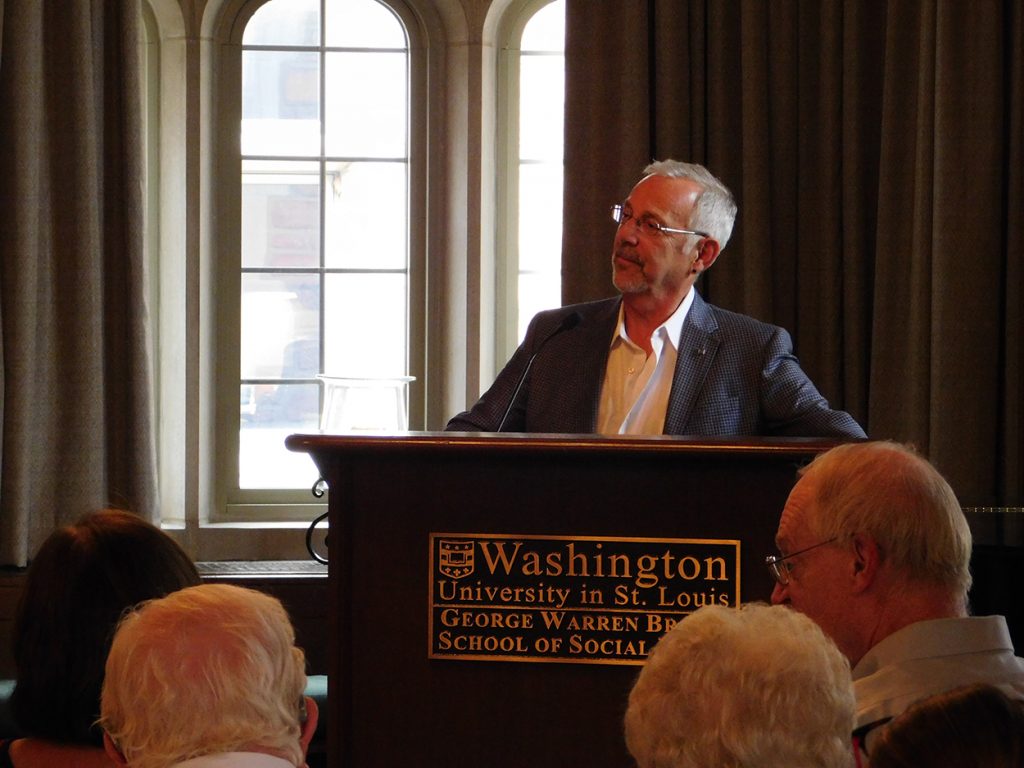The walls of Brown Lounge were lined with people, the floor filled with students who couldn’t find seats, all to hear from the author of “Toxic Inequality: How America’s Wealth Gap Destroys Mobility, Deepens the Racial Divide, and Threatens Our Future.” Thomas M. Shapiro, PhD, told them that in American society “it’s tougher to get ahead at exactly the time when inequality is increasing.”
Shapiro and his team have spent 12 years following the lives of 187 families in St. Louis, Boston and Los Angeles. In his lecture on October 5, he told the story of Patricia Arrora, a self-described “daughter of Watts,” who moved her family to the relative safety of Southern California’s Inland Empire, where she bought a home.
Then the foreclosure crisis hit. Arrora was among the 200,000 borrowers of color whom Countrywide Financial later admitted to charging higher interest rates and fees than white mortgage customers, Shapiro said. There was even a provision in Arrora’s mortgage forbidding her from refinancing, which took some legal wrangling to resolve.
It’s this type of institutional racism Shapiro exposes in his new book.
“It’s about how institutions and dynamics, largely outside the individual’s control, ends up in her case threatening to reverse all of the hard work, merit and achievement that she had earned at least over the 12 years between the first [and second] set of interviews,” Shapiro said.
Shapiro is a sociologist who earned his PhD at Washington University in St. Louis in 1978 and taught at the George Warren Brown School of Social Work. He’s now the Pokross Professor of Law and Social Policy at the Heller School at Brandeis University, where he directs the Institute on Assets and Social Policy.
Shapiro is also the author, with Melvin Oliver, of the landmark book “Black Wealth/White Wealth.”
Since fewer African-Americans and Hispanics work for businesses that offer 401(k)s, Shapiro is critical of the Trump administration’s decision to cancel the myRA retirement savings program.
And he is big believer in saving early. He praised researchers at the Center for Social Development who are working on Child Development Accounts, calling them part of the solution to income inequality.
The great wealth builder in U.S. society is often real estate, an area Shapiro says is still suffering from racial segregation. The data he examined show the whiter and higher in socioeconomic status a neighborhood is, the faster homes there will gain in value. As neighborhoods become more diverse, however, he finds home equity doesn’t grow as fast, and the ceiling for how high houses can appreciate is lower. Real estate agents may tout “location, location, location,” but Shapiro says it’s more about “demographics, demographics, demographics.” It’s a theme common throughout Toxic Inequality.
Shapiro’s lecture was sponsored by Washington University in St. Louis’ Department of Sociology and co-sponsored by the Brown School of Social Work, School of Law and the Weidenbaum Center on the Economy, Government, and Public Policy.
